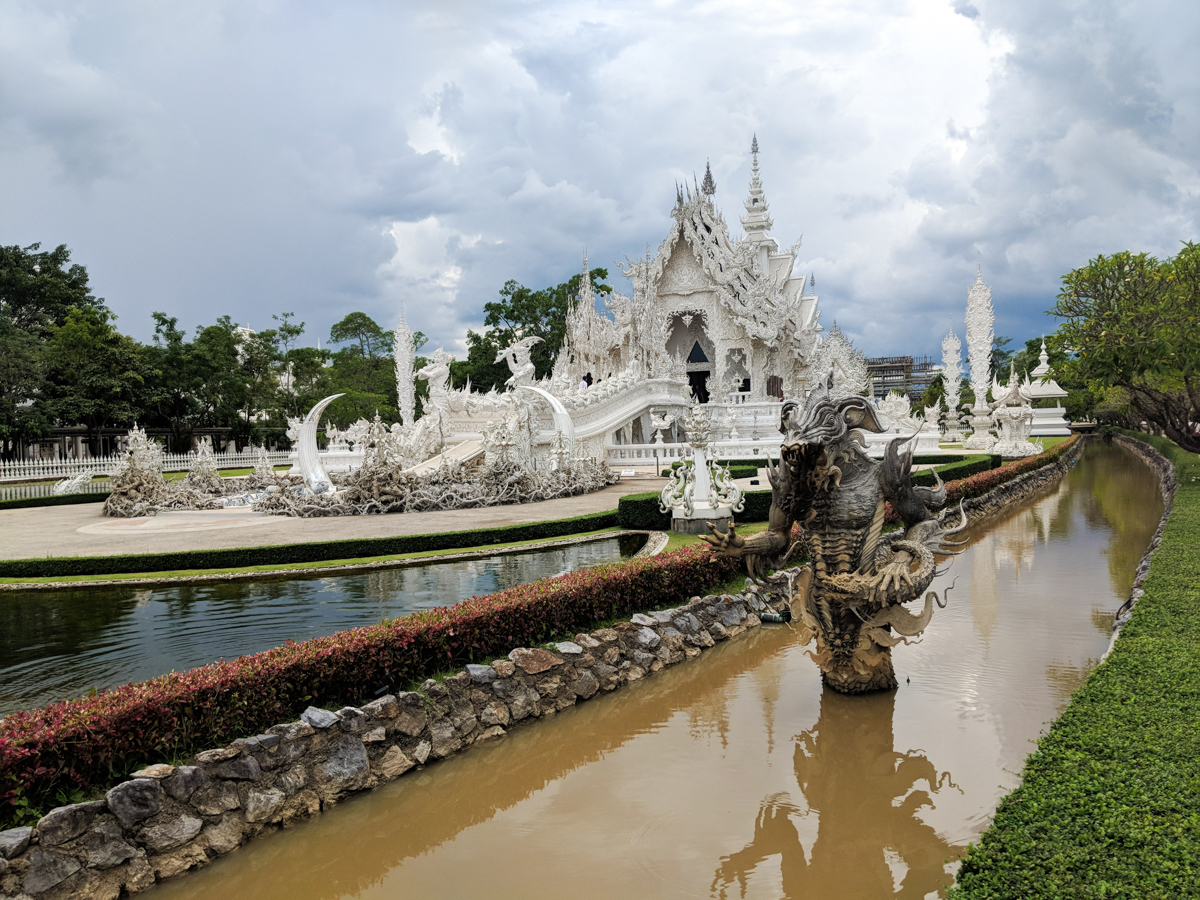Art, Spirituality, and Medicine in Chiang Rai

What was originally a one day stint in Chiang Rai turned into a three day stay when I came down with a fever and sore throat. Since Thailand is slightly more medically advanced than Laos, and most of my Laotian itinerary would consist of being in remote parts of the wilderness, I though it best to stay in Thailand until I felt better.
Another great thing about Thailand is how you can get most medicine over the counter. Not that I would recommend self-diagnosing since seeing a doctor is still very affordable, even as a foreigner. But since I’m trying to save every bit of cash I have, and the biggest risk of taking amoxicillin when you don’t need it is building immunity, I decided to see if what I had was, indeed, strep throat.
The nice pharmacist also recommended some traditional Thai medicine to treat my symptoms, and I felt much better within a day.

Chiang Rai is probably my favorite part of Thailand. Initially I wanted to wake up early and take the buses to the temples (the three places I wanted to visit were all spaced far apart, so it would take some time to get to all of them) but despite sleeping for two days straight, my body decided it still needed to sleep in until noon on the third day. This did not give me enough time to take the bus, so I ended up hiring a taxi for 800 baht for the day.
Wat Rong Suea Ten

My first stop was to the Blue temple (Wat Rong Suea Ten). I absolutely chose the temples based on their artistic quality. The Blue temple was built on top of ruins of another temple that was abandoned about a century ago. No one knows the true identity of the temple’s designer, but rumors have it that it was designed by one of Chalermchai Kositpipat’s (creator of the famous White temple) students.








Most guides say that this temple is the least known of the three, but when I visited it at 1pm, it was definitely the most crowded. Still under construction, you shouldn’t need more than 30 minutes to an hour to tour the entire grounds.
Baan Dam

Baan Dam, or Black House, was constructed by late Thai artist Thawan Duchanee. The entire compound takes about 1-2 hours to tour. Duchanee used animal hide and bones to reconstruct Buddhist and Balinese-inspired themes fused with statements about modern commerce.














The presence of living cows on the compound made the exhibits all the more ethereal and creepy. Many critics claim that Duchanee’s Baan Dam is the Hell to Chalermchai Kositpipat’s Heaven, but Duchanee responded to the claim with a quote from John Lennon: “There’s no Heaven above and no Hell Below.”
Wat Rong Khun

Chalermchai Kositpipat created one of the most well-known pieces of architecture in Thailand: The White Temple.












